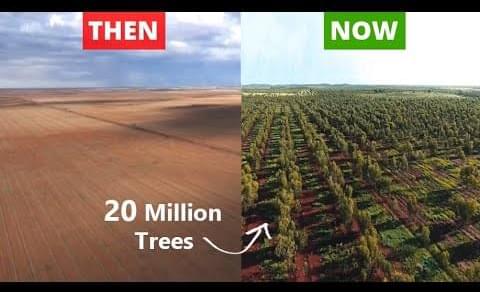Australia is the driest inhabited continent on planet earth, and is home to The Great Australian Desert which is the 4th largest desert in the world after The Antarctic, The Arctic and The Sahara.
Australia is comparable in size to The United States however its population is significantly less than America’s, the whole of Australia has about the same number of people living in it as the state of Texas. Despite the low population Australia is one of the worst developed countries in the world for broadscale deforestation, wiping out endangered forests and woodlands. In fact, they have cleared nearly half of all forest cover in the last 200 years!
It began in around the early 1800s when the British colonized Australia in search of land and fortunes. At that time Britain had already been completely stripped of trees for centuries by intensive agriculture and war, even today The United Kingdom has one of the lowest percentages of forest cover in Europe. British timber companies were granted free access to vast areas of virgin forest in Australia and trees were felled for agriculture and railway tracks which were constructed alongside other transit infrastructure such as roads, bridges and jetties.
By the 1880s concerns about stripping the forests were being raised but no steps towards conservation were taken and now Australia has become the worst offending country in the world for mammal extinctions, 55 wildlife species plus 37 plant species have gone extinct. The wide spread deforestation has resulted in 55% of all Australian land area being used for agricultural purposes and around 72% of all agricultural output is exported. Meat and live animals has been the fastest-growing export segment, growing 33% in value, However agriculture only accounts for 1.9% of value added (GDP) and 2.5% of employment in 2020–21.
The wide spread land degradation has resulted in man made desertification after centuries of tiling, and the introduction of non native grazing grasses has taken its toll on the landscape. However some regions in Australia are starting to turn this around, transforming large areas of degraded land back into bio-diverse ecosystems, by restoring millions of trees and in turn improving the lives for rural farming communities, as well as capturing over a million tons of carbon to benefit the planet as a whole. This can be considered a major accomplishment for any country, particularly one that has a low average rainfall of 16 inches per year. In this video we will show you how a 200km long green corridor will connect 12 nature reserves across a 10,000 km².
Make sure to check out: Carbon Neutral for more info!
__________________________

